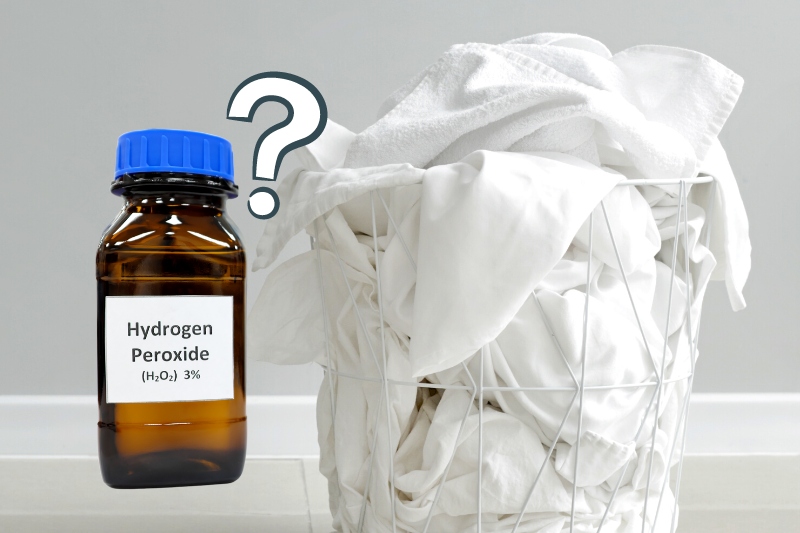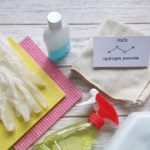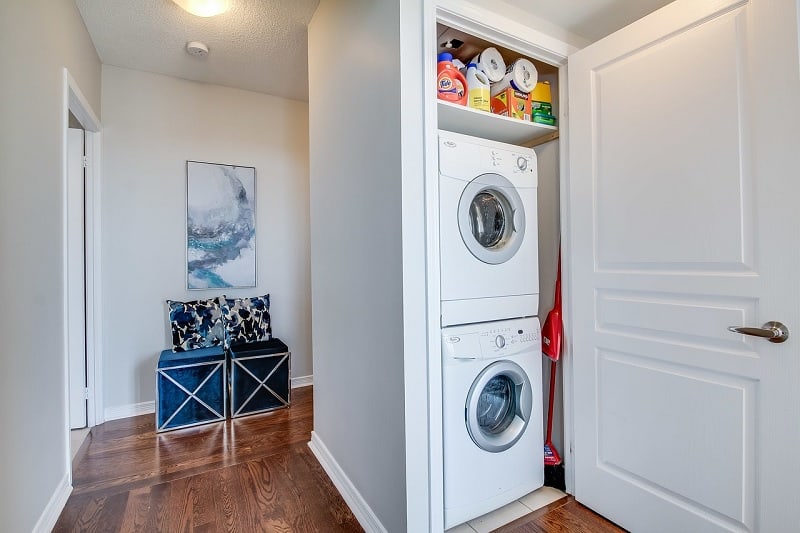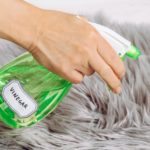Hydrogen peroxide is a great alternative to bleach. It is commonly used for cleaning and disinfecting, but many people are concerned about using it on their clothing.
This is because bleaching agents are well-known for causing damage and discolouration to certain fabrics.
So, is hydrogen peroxide safe on clothes? The answer to this question is yes! When used correctly, hydrogen peroxide can be a great addition to your laundry routine.
This article covers the many uses of this natural bleach in the laundry room. We also give you some ideas on how to use it in the rest of your home and go over the best places for buying this product in the UK.
So, read on for everything you need to know!
How to Use Hydrogen Peroxide Safely on Your Clothes
Hydrogen peroxide is a safe alternative to chlorine bleach with a wide range of uses in laundry. It can also be used on all dye-stable fabrics without the risk of damaging your clothing.
When doing your laundry, the best strength hydrogen peroxide to use is a 3% solution. This is one of the most common concentrations out there and the best choice for the vast majority of cleaning jobs.
The main uses of hydrogen peroxide in laundry are detailed below, along with the best practices for a safe and damage-free application.
1. Whiten clothes
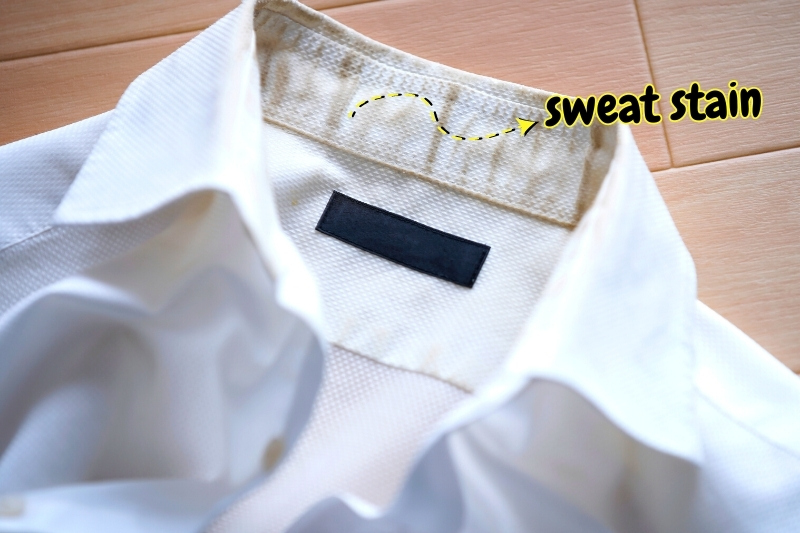
Over time, white fabrics are particularly prone to becoming dull and yellowed. This discolouration occurs because of sweat, residue from laundry detergents and fabric softeners, and the transfer of dye from other clothing items.
Adding hydrogen peroxide to your white wash will help remove any yellow stains and brighten the fabric so that it looks like new. To do this, simply add 240 ml of hydrogen peroxide to your washing machine’s bleach dispenser so that it is dispersed during the wash cycle.
If you have a garment with particularly bad underarm stains, you can also combine a little hydrogen peroxide with bicarbonate of soda and water to create a stain remover. This can be applied to the marks before placing the item in the wash.
2. Stain removal
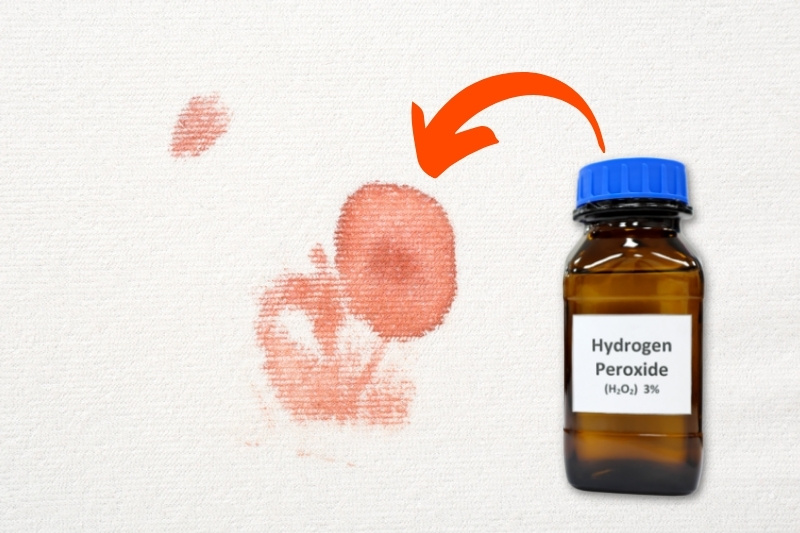
Hydrogen peroxide is an effective stain remover for protein and plant-based stains. This includes things like blood, tomato sauce, and orange juice.
To treat the stains, add a little hydrogen peroxide directly to the mark, leave it for 10 minutes, and then wash the item as usual.
Before using hydrogen peroxide in this way, it is important that you do a patch test on an inconspicuous part of the garment.
Although hydrogen peroxide is a mild bleaching agent, it can still cause discolouration on some fabrics.
To test it, rub a small amount of the liquid onto the fabric using a cotton swab. If there is no colour transfer onto the cotton, it is safe to proceed.
3. Brighten coloured clothes
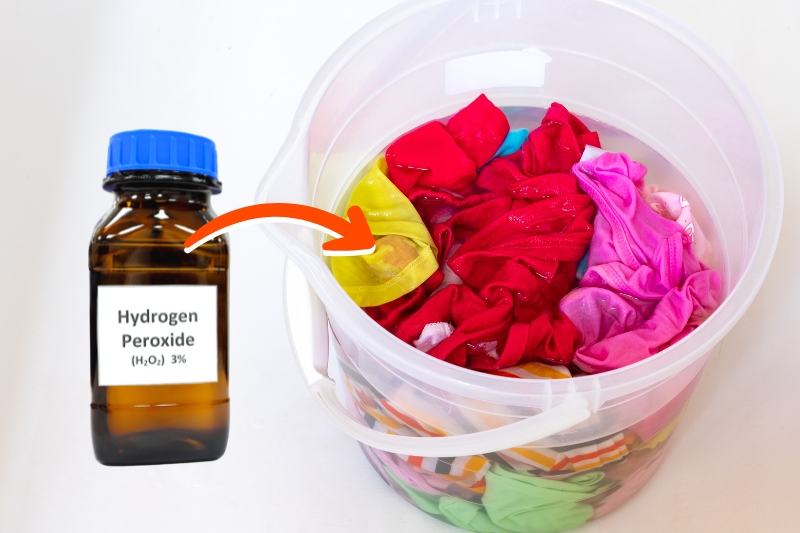
It’s not always noticeable, but coloured fabrics can dull with time due to repeated contact with sweat and laundry detergent residue.
Like with white clothing, hydrogen peroxide can help to reverse this fading, making your coloured clothes bright once more.
Before adding any hydrogen peroxide to your washing machine, ensure that you do a spot test on any clothing items that haven’t been used with the bleaching agent yet.
Simply follow the instructions given above so that you know the fabric is dye-stable.
Once you’ve completed your tests, add 240 ml of hydrogen peroxide to your washing machine’s bleach dispenser.
You can also dilute it in 500 ml of water and pour it into the empty drum before loading in your faded clothing if preferred.
4. Remove odours
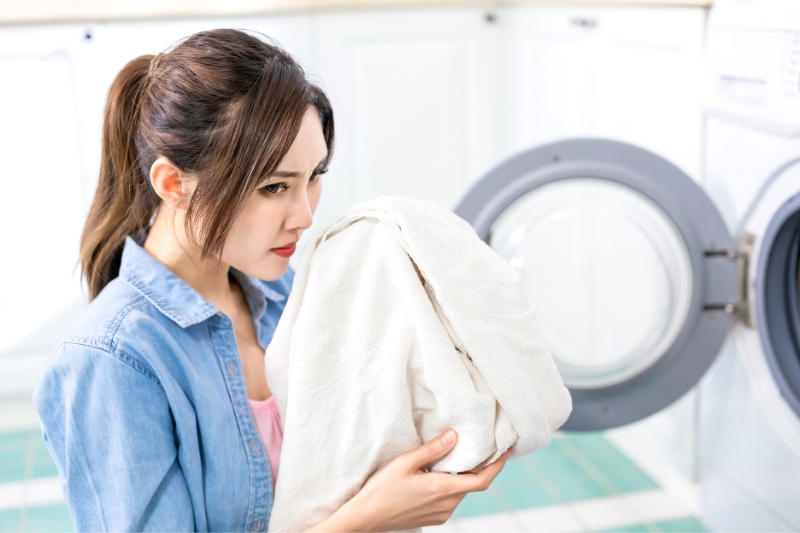
The last way to use hydrogen peroxide in your laundry is to remove foul smells from your clothing.
Although mild odours will effectively be removed in the wash, stronger ones may require a little more help to be eliminated entirely.
The best way to remove these odours is by soaking the garment in hydrogen peroxide for 15-30 minutes.
To avoid damage to the fabric, you need to dilute 120 ml of the bleaching agent in enough water to submerge your clothing item fully.
If you need to soak a whole load of smelly clothes at once, it is best to double the amount of hydrogen peroxide used (240 ml) and leave the clothing for up to an hour.
Once the time is up, you can remove the garments from the solution, place them in the washing machine, and launder them as usual.
Can You Buy Hydrogen Peroxide in the UK?
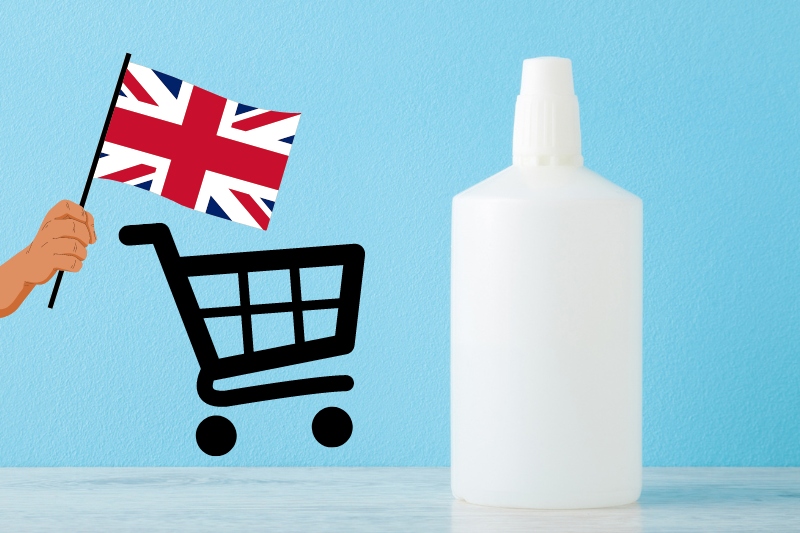
Although hydrogen peroxide is an incredibly useful product to have in your home, it is not very easy to find in the UK.
Some common cleaning products will list it as an ingredient, but it is rare that any supermarket will sell hydrogen peroxide on its own.
Your best bet for buying it in the UK is to look at online retailers, such as Amazon. These stores will have plenty of options for you to choose from, including small bottles for a one-off use or bigger ones for those who wish to buy it in bulk.
Some chemists will also stock pure hydrogen peroxide, but it will be kept behind the counter as the sale of it is highly restricted.
This means you must ask to buy it and will have to provide a valid reason for your purchase before it is handed over.
Other Uses for Hydrogen Peroxide
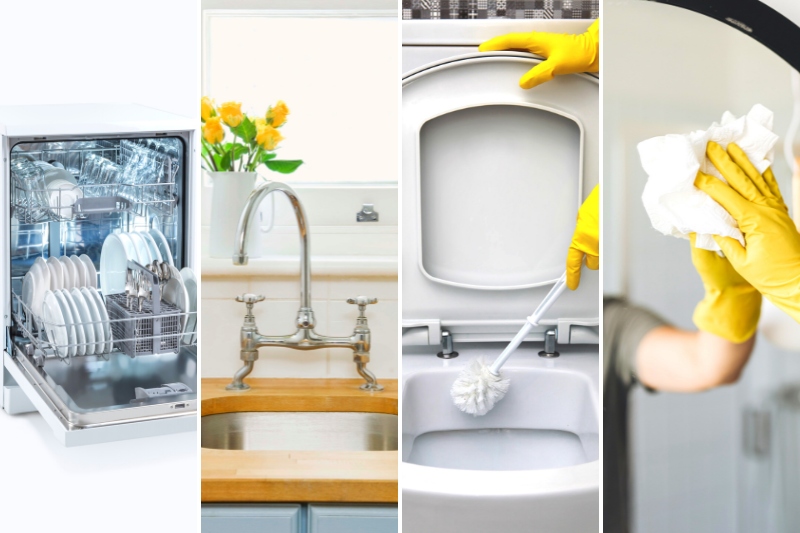
Hydrogen peroxide is a great addition to any laundry routine, but it can also be used in place of many other cleaning agents. Some of the best uses of this natural cleaner around the home include:
- Cleaning the dishwasher: Spray or wipe the hydrogen peroxide on the seals, arms, traps, and utensil basket in your dishwasher to eliminate nasty odours. These areas are the most important to treat, as they often remain damp for a long time after a wash cycle.
- Cleaning the sink: Hydrogen peroxide is perfect for cleaning sinks. Use a sponge to scrub a little bicarbonate of soda and water into the surface of your sink. Next, pour hydrogen peroxide over the sink and allow it to sit for 10 minutes before rinsing everything away.
- Disinfecting bins & litter trays: Wash the bin or tray with warm soapy water to remove as much build-up as possible. Then spray the surface with a 1:1 solution of hydrogen peroxide and water, and leave it to dry in the sun.
- Cleaning the toilet bowl: Pour 120 ml of hydrogen peroxide into the toilet bowl in place of your usual bleach. For the best results, leave it to sit for 20 minutes before scrubbing and flushing it away.
- Wiping down mirrors and glass: To get streak-free mirrors, spray the glass with a solution of one part hydrogen peroxide and one part water. Then, use a paper towel or a microfibre cloth to wipe the surface clean and buff it to a shine.
- Sanitising toothbrushes and retainers: To sanitise a toothbrush or retainer, simply soak the item in hydrogen peroxide for a few minutes. This will greatly reduce the amount of bacteria you’ll come into contact with when doing your teeth.
- Washing makeup brushes: You can’t put your makeup brushes in the washing machine, but you can clean off excess makeup with shampoo, then soak the bristles in water and a teaspoon of hydrogen peroxide. Leave them to sit for 10 minutes before rinsing thoroughly.

Hannah has a passion for cleaning. She worked her way around Australia by cleaning hostels in exchange for free accommodation and used her cleaning skills to bag a job as a chalet host for a luxury ski company in France.
